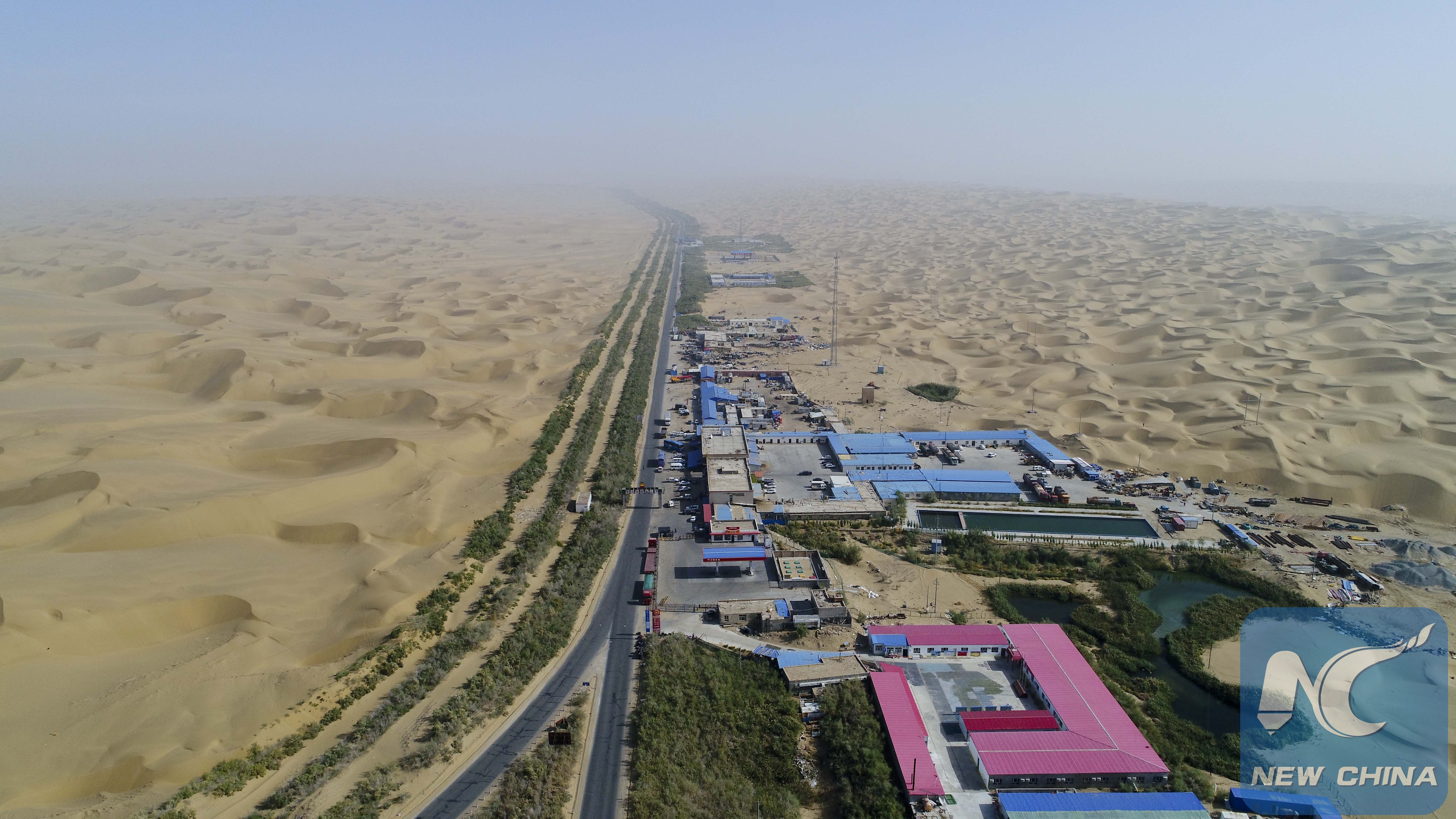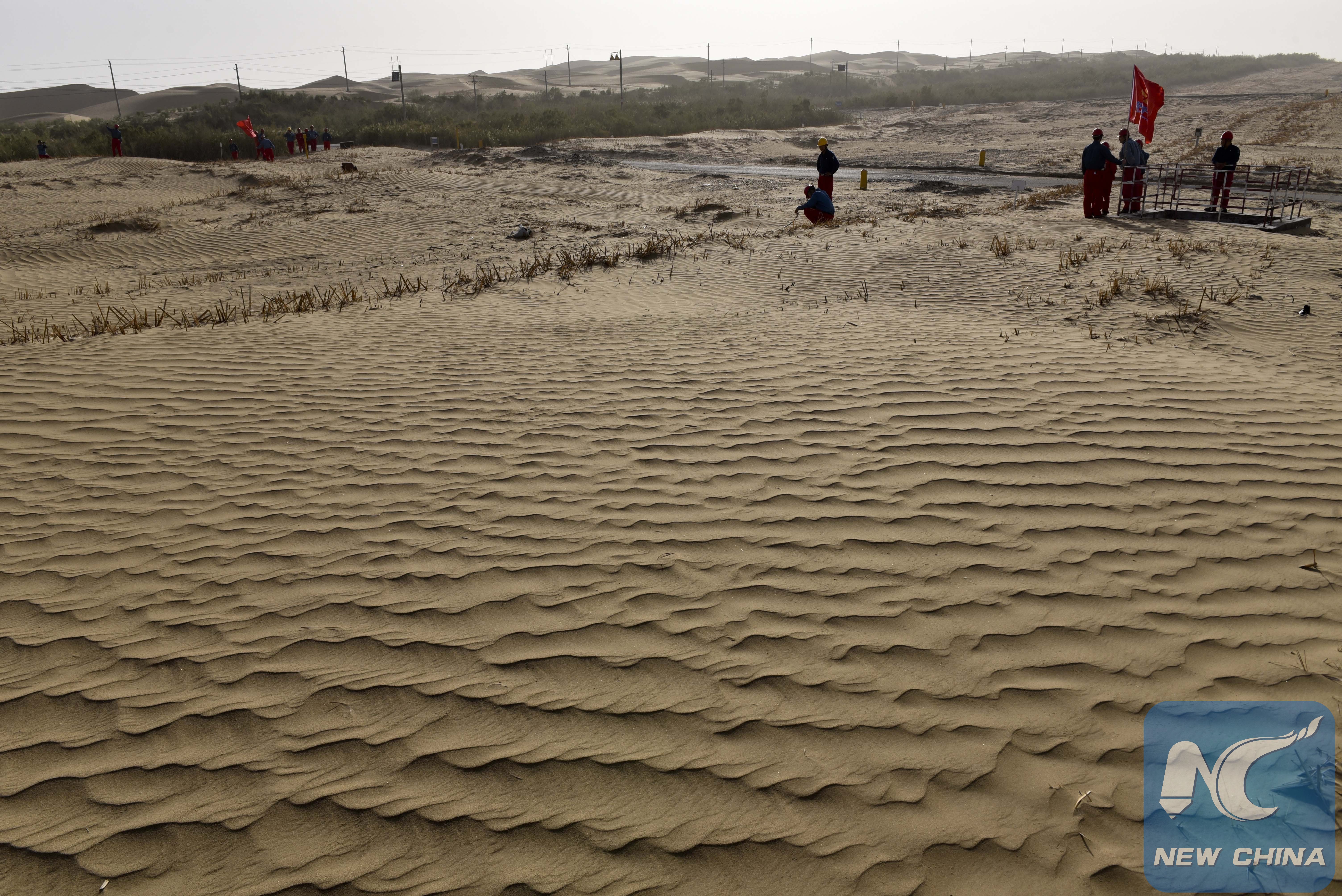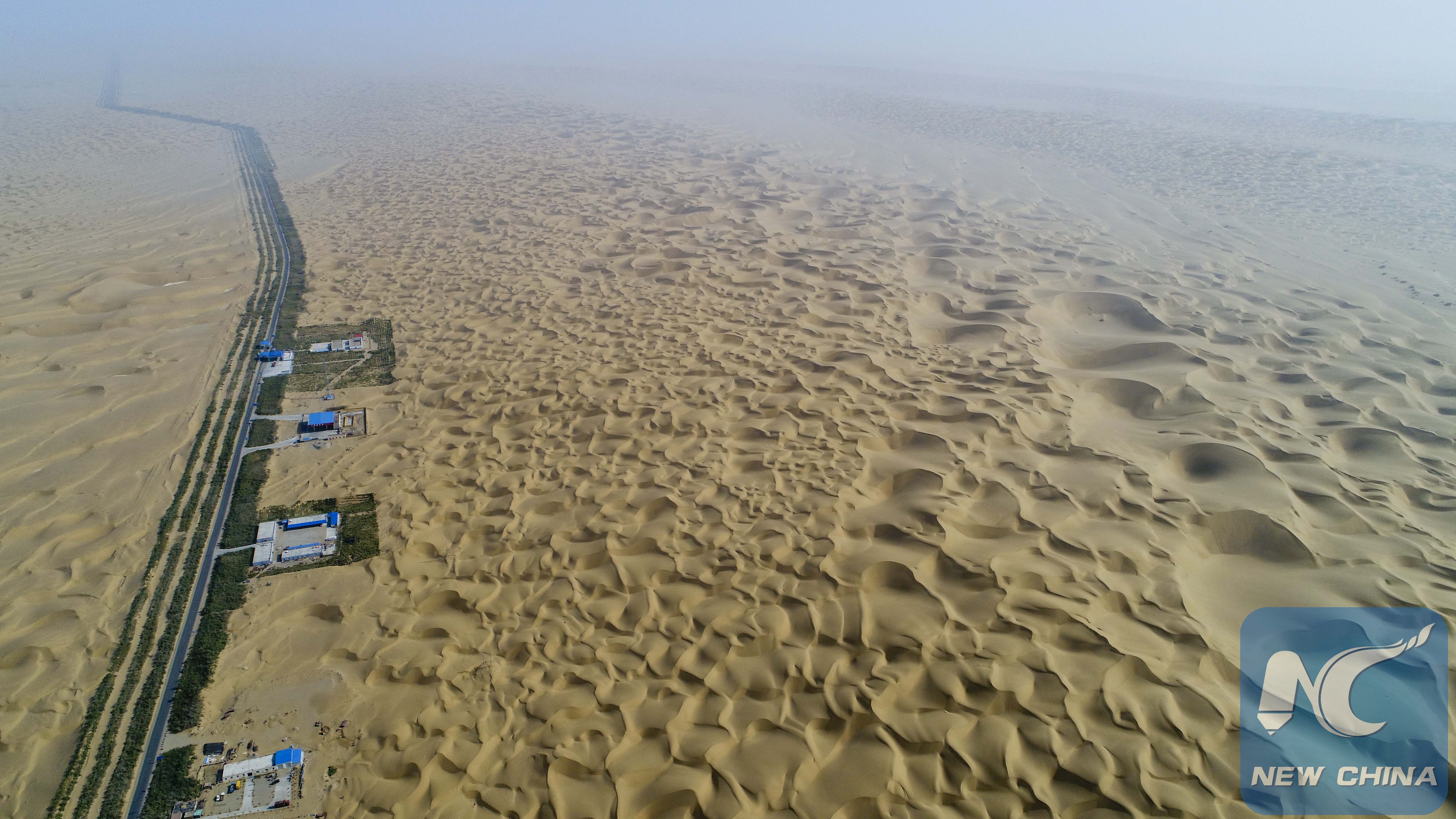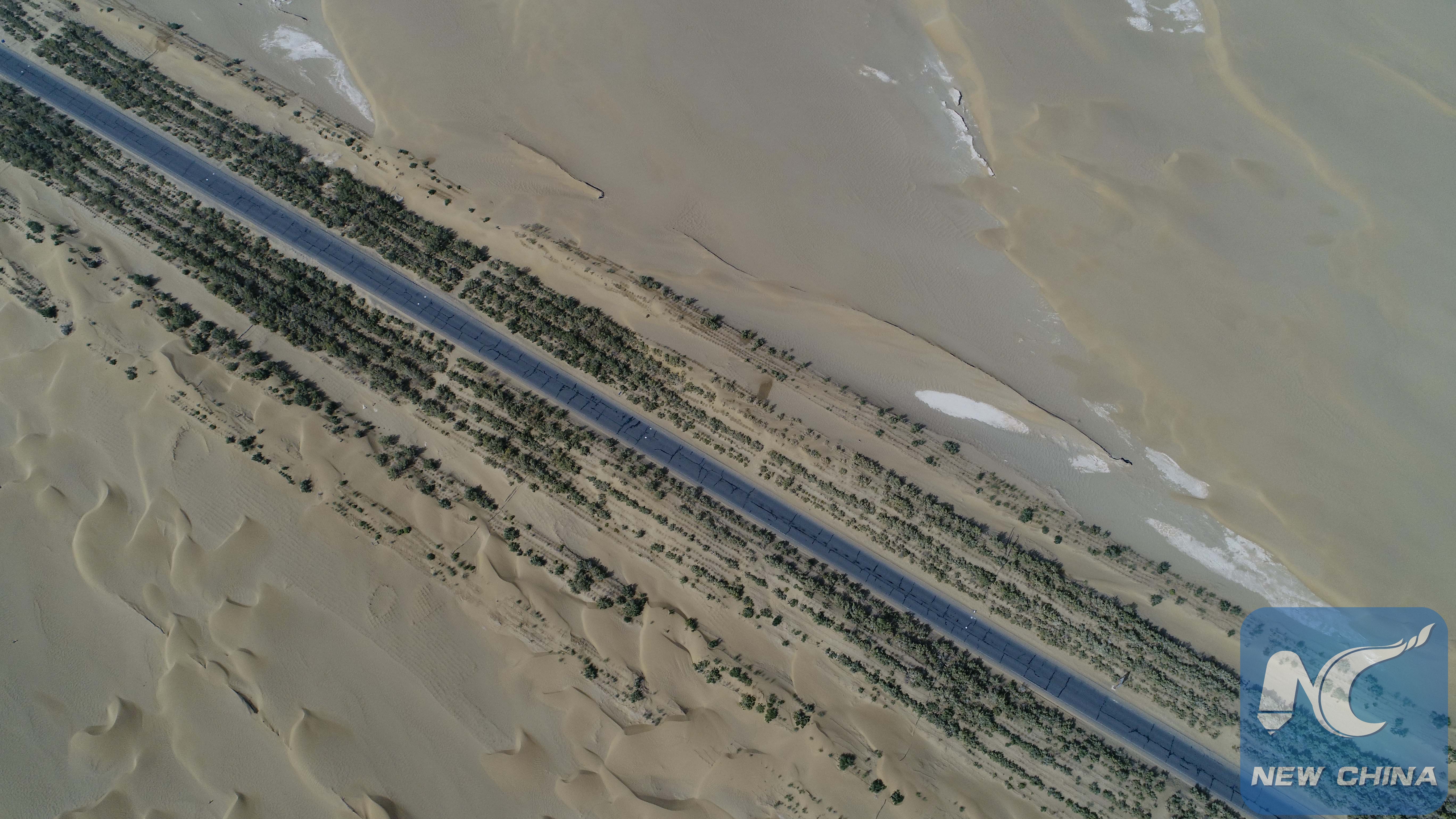
An aerial view of Tazhong Township. (Xinhua photo/Hu Huhu)
By Zhao Tianshu, Gu Yu, Bai Jiali, Xue Yanwen
In the hinterland of China's largest desert Taklamakan, there's not just wind and sand. In Tazhong Township, or center of Taklamakan, oil workers and scientists have brought green to the desert after decades' efforts.
Deep in northwest China's Xinjiang Uygur Autonomous Region, the 337,000-square-km Taklamakan Desert is the world's second largest shifting sand desert and is known as the "sea of death" across China. In the Uygur language, its name means "go in and you won't come out." Oases in it once served as important trading spots along the ancient Silk Road.
The place was unpopulated until oil workers marched deep into the Tarim Basin in 1990s. The Tarim Oil Field Branch of China National Petroleum Corporation settled a work zone here. Since then, the "heart of the desert" started beating, showing vitality and hope. In 2015, Tazhong Township was established.

The work zone of the China National Petroleum Corporation. (Xinhua photo/Hu Huhu)

Workers check oil pipelines in the desert. (Xinhua photo/Hu Huhu)
Seen from the air, Tazhong is like an isolated island in the sandy "sea of no return". It connects the northern and southern parts of Tarim Basin. To the south, the town leads to two major silk road trading posts, Qiemo and Hotan counties, while, to the north it leads to Aksu and Korla cities and to the inland of China.
Many vehicles traversing this treacherous land often take a stop here. Along the roads are dozens of scattered shops, most of which are convenient stores and restaurants of cuisines nationwide, serving hurrying visitors. Two KTV clubs are the only places of leisure for local residents.
Dust is blown about when vehicles whirl on the road. "Roads afford a livelihood to us," says Yusupjan Yasin, who sells noodles by the roadside. At lunchtime, cargo trucks and shuttle coaches gradually pull over. Restaurants are crowded with travelers from all over the country.
"Apart from oil workers and passersby, more tourists are coming to Tazhong in recent years," says Guan Hongyu, owner of a hostel. "The desert has become a tourist destination."

A highway traverses the desert. (Xinhua photo/Hu Huhu)
It was hard to imagine the "no man's land" would embrace residents and even tourists decades ago. While the annual precipitation is only 25cm, the amount of evaporation in Tazhong is 150 times as much. Sand and dust strike the town for more than 180 days out of a year. The lowest temperature can reach -26 degrees Celsius, while the highest 46 degrees Celsius, resulting in dramatic daily temperature swings.
Yet, despite the cruel climate, oil workers and scientists has managed to plant greeneries here. In 2002, a 436-kilometer-long afforestation project was launched and a botanical garden was built in Tazhong. It is the world's only botanical garden in the center of desert.

The 436-kilometer-long belts of tree on both sides of the highway. (Xinhua/Hu Huhu)

The botanical garden in Tazhong. (Xinhua photo/Hu Huhu)

Botanist Chang Qing (R) works in the botanical garden. (Xinhua photo/Hu Huhu)
"We are the first residents here," says oil worker Tan Hui. "The desert now is no longer a barren land."

